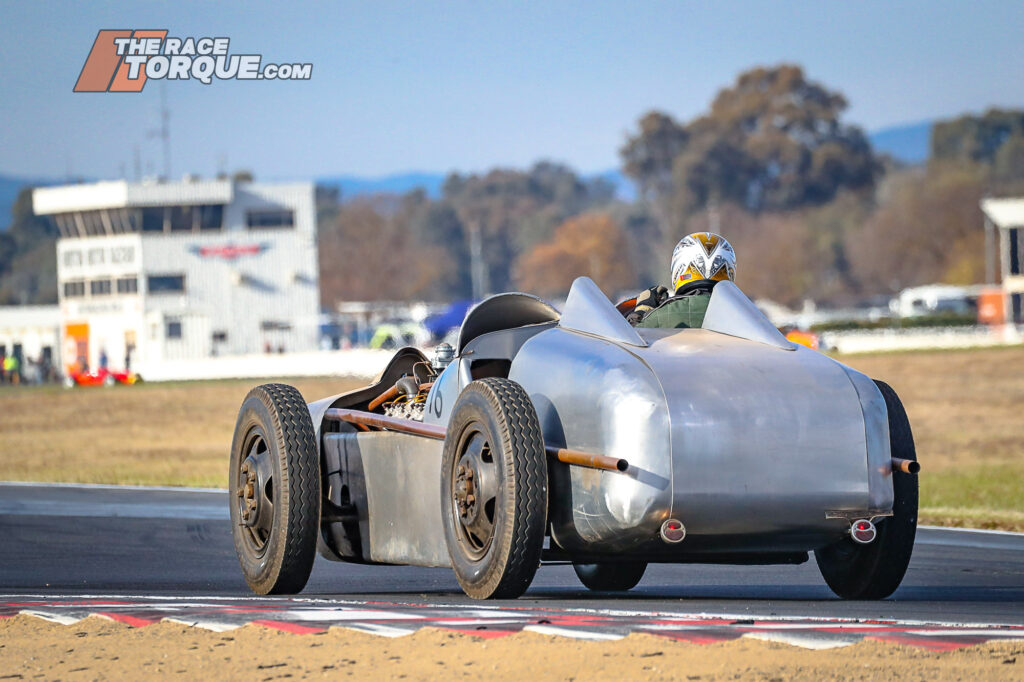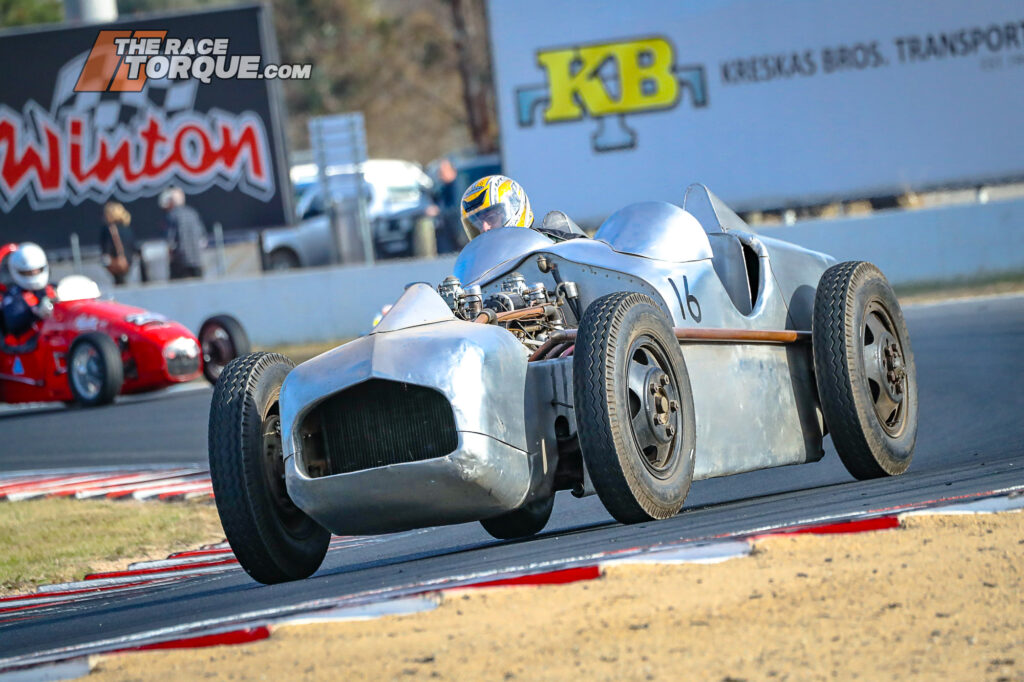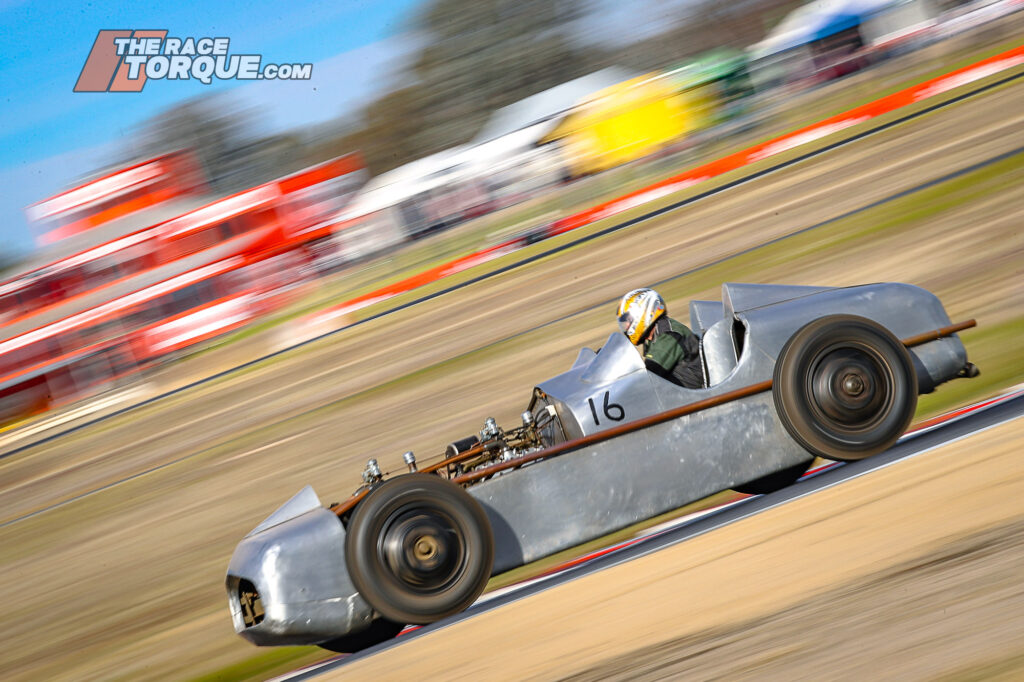Australia’s Incredible Twin Engine V16 Throwback
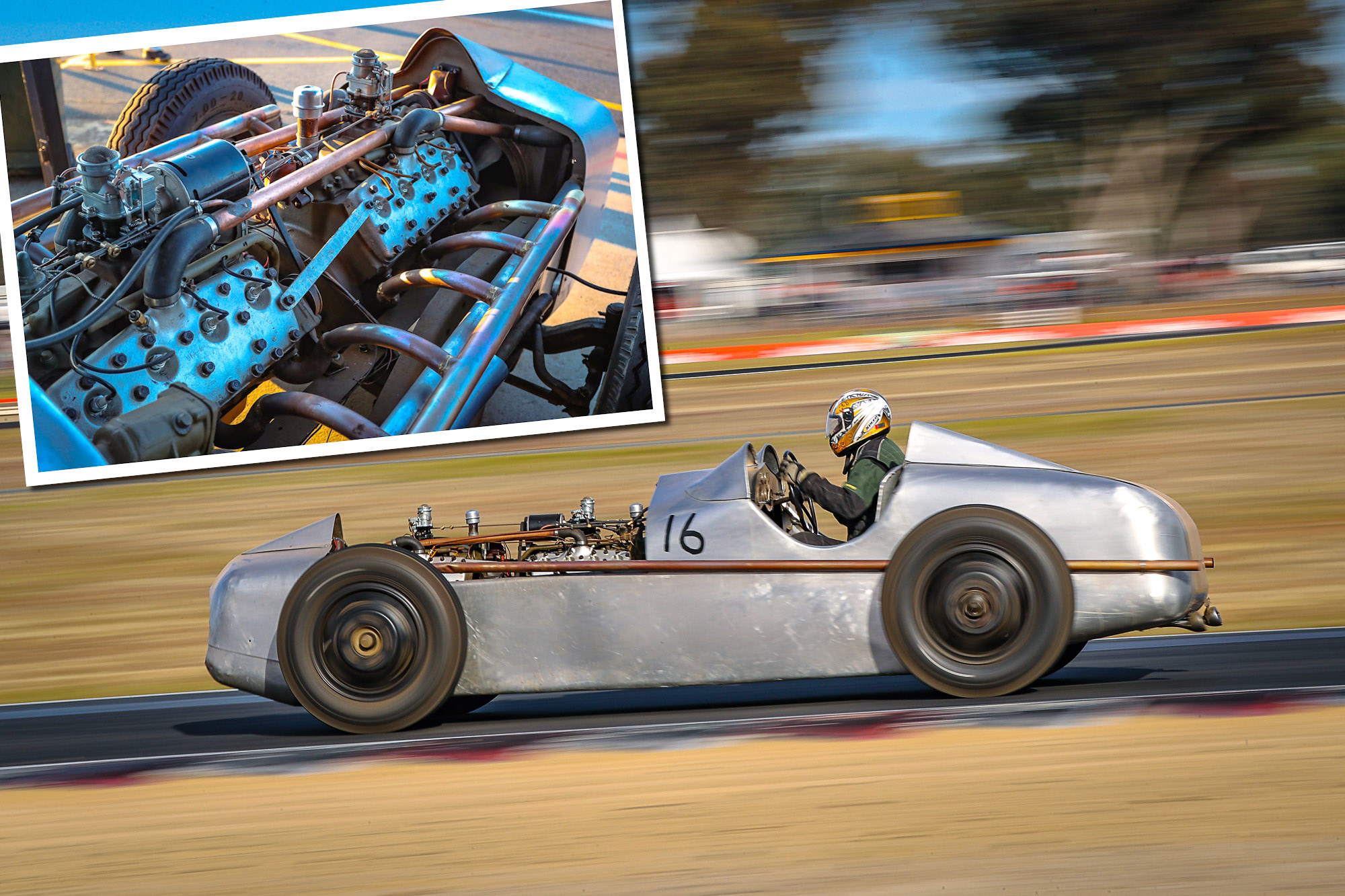
Following the pandemic lockdowns across Victoria, positive stories from the motorsport world were somewhat hard to come by, but that time locked away in the shed is now bearing fruit.
Recently emerging from one Melbourne skunkworks is a throwback to a certified legend of Australian motorsport: a recreation of Eldred Norman’s beastly Double Eight V16 special.
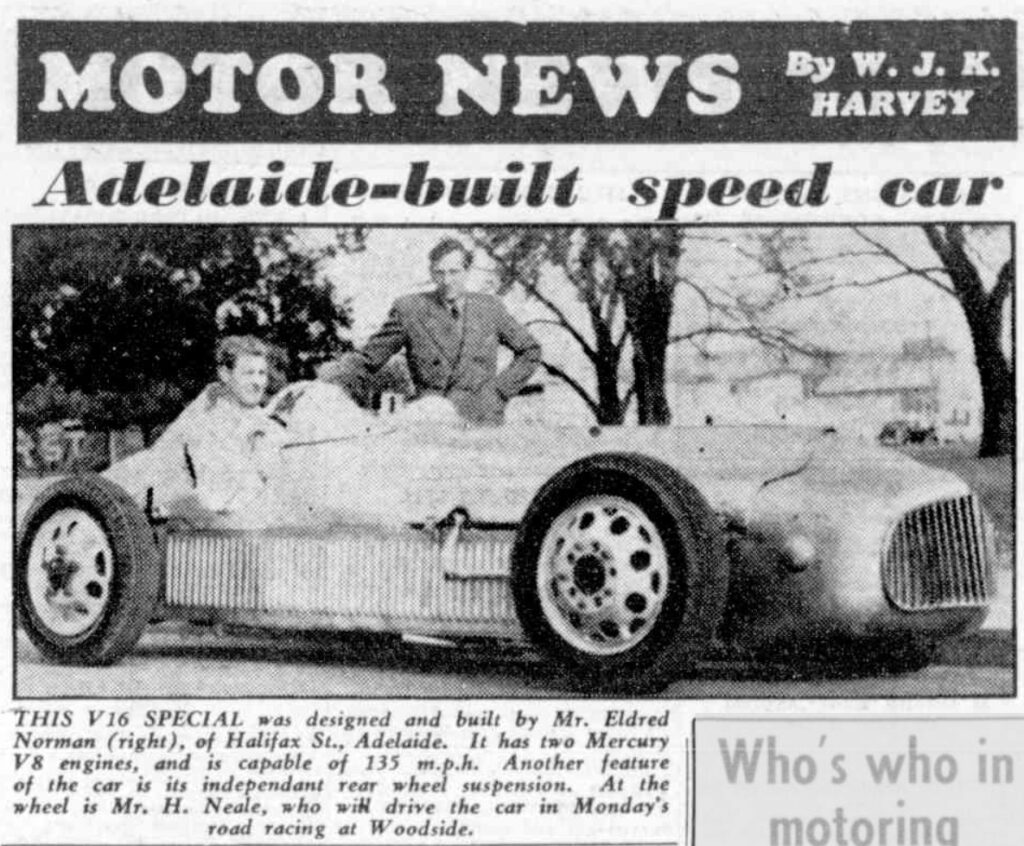
News (Adelaide) – 8/19/1949
The Double Eight
Eldred Norman was a self-taught engineer, with some of his solutions truly outside the box.
Having established an engineering and car trade business ahead of the War, he moved into garden tool production before spreading his wings into a range of areas, such as a converter mounted to the car’s boot that turned water into machine-propelling hydrogen.
He was also a specialist when it came to Super Charging, a dark art he mastered.
Unable to enlist in the Army due to asthma, after the War, Norman started trading surplus Army Jeeps and trucks from the Australian territory of New Guinea, exporting the kit back home to Adelaide in 1946.
He had a passion for motorsport, and while money was tight, he did have an array of parts at his disposal and the creativity to turn them into a race car.
The Mercury V8 proved to be a nice powerplant for competition use, and two would be even better.
When a pair of the powerplants were mated to a chassis from a Dodge weapons carrier, the “Double Eight”, “Bi-Mercury”, or “Double Bunger” was born.
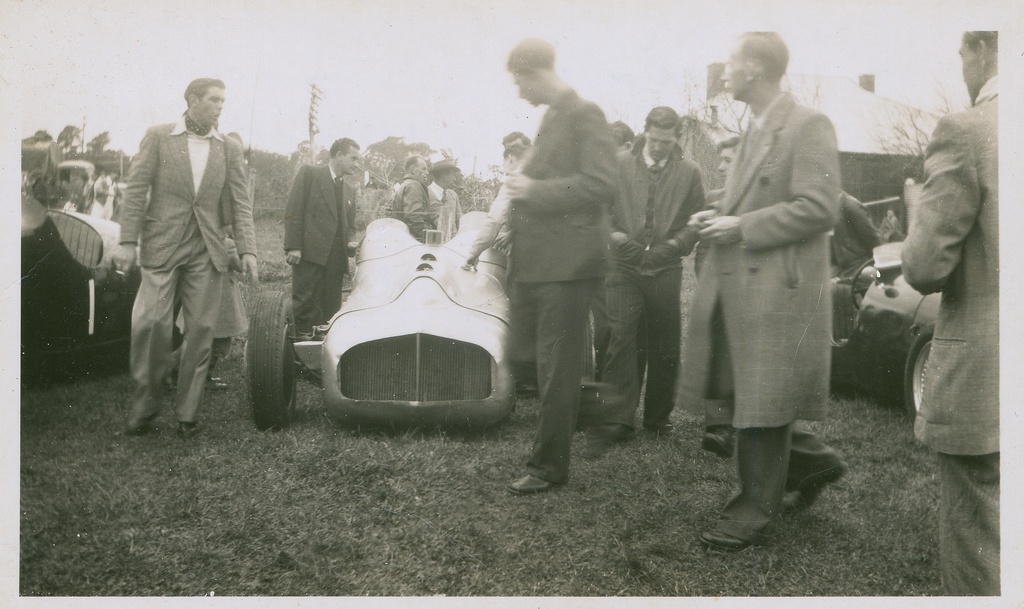
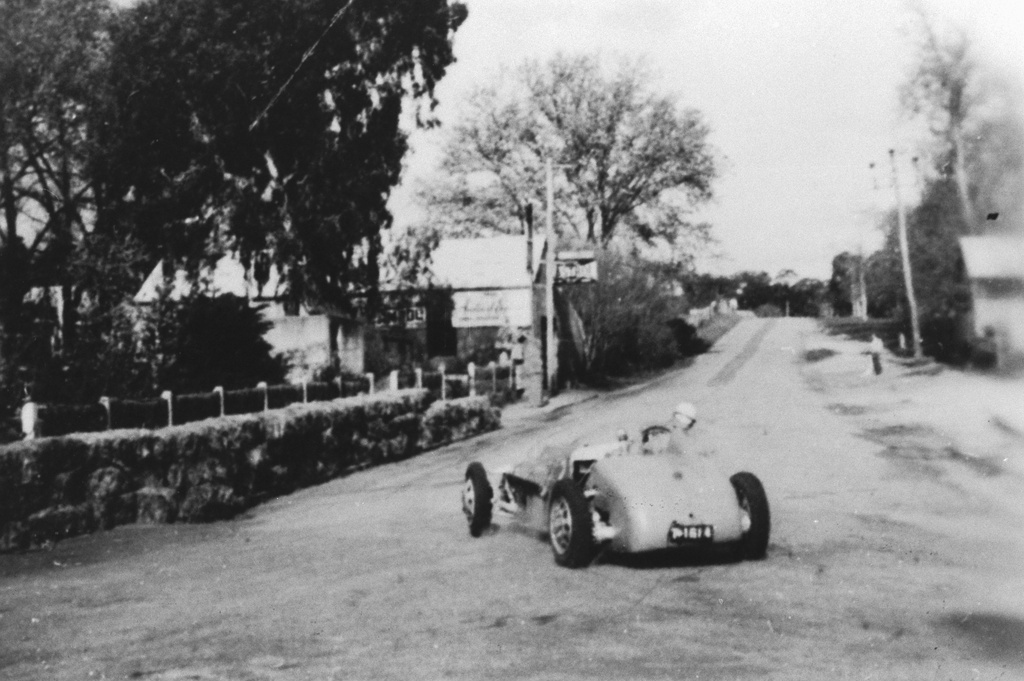
State Library of South Australia
The in-line V8s, tuned to fire as a V16, were coupled together with an elaborate drive chain arrangement, which compensated for the car’s flex pulling in all directions.
Bodywork, meanwhile, was pieced together from old US warplanes, while four-wheel independent suspension helped keep the monster on the straight and narrow.
Completing the initial version of the car, a twin-seat cockpit was utilised.
At 7,800cc, the beast pumped out around 200hp, with the twin engines propelling the car to a terminal velocity of 135mph, or over 200km/h in the new speak – however, with all that torque, it got there quickly.
Tipping the scales at over 1,100kg, one problem quickly became apparent: brakes.
Way ahead of the curve, Norman installed water cooling jets to the front brakes, powered by electric petrol pumps, with the fluid sent from an onboard reservoir when a brake pedal-operated switch was pressed.
It worked a treat, leaving large clouds of steam in braking areas. Additionally, a fan working from the tail shaft cooled the inboard-mounted rear brakes.
Further to being a successful competition machine, Norman had the Double Eight road registered, and he regularly commuted to far-flung events, such as Fishermans Bend in Melbourne, a 1,500km round trip along very substandard roads, all without mufflers.
The sight of Norman buzzing around the Adelaide Hills with a trade plate hanging around his neck was standard practice.
From circuit racing to hillclimbs and beach racing, the car and driver were regular winners.
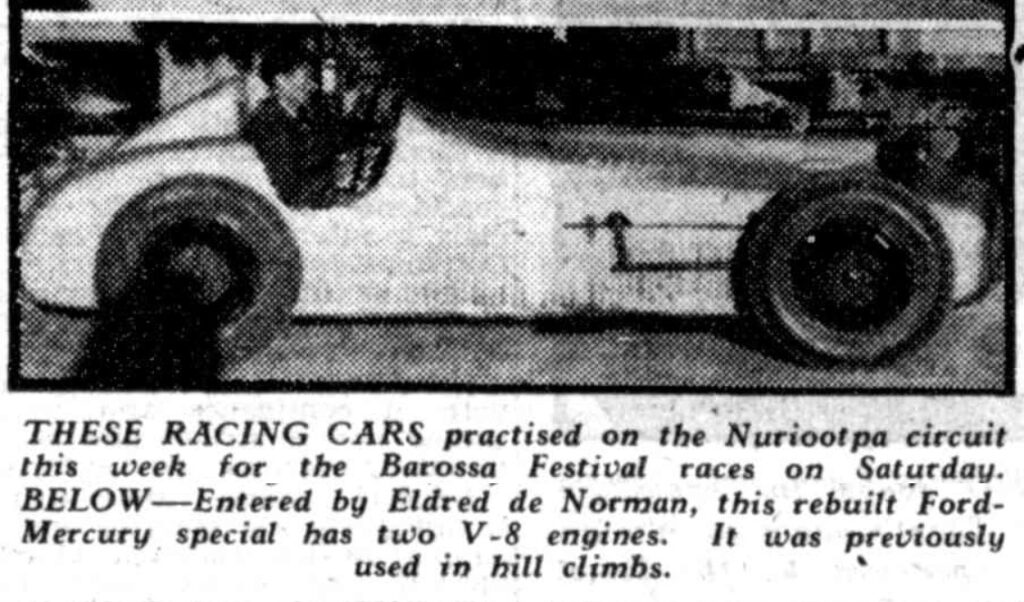
News (Adelaide) – 19/4/1949
However, it wasn’t always smooth sailing.
At Sellick’s Beach in 1950, with speedway ace Harry Neale behind the wheel, the Double Eight went for a swim while travelling at 120mph (193km/h).
Neale emerged from 20 feet of water unhurt, with the steel bodywork of the car badly torn.
Norman then set his sights on the Australian Grand Prix.
At Nuriootpa in 1950, the car only lasted two laps in its home race.
Next up, following an arduous trip across the Nullarbor Plain, Norman arrived at the 1951 AGP in the WA Wheatbelt town of Narrogin, with the race contested on a 7.08km temporary street circuit.
Now in single-seater trim, in the preliminary over 1,500cc scratch race, Normal duelled for the lead, but overshot a hairpin on the last lap – however, he used the prestigious power of the Mercuries to blast back by to take the win.
In the main race, the Double Eight overcame the handicap start to scythe through to the lead on lap four, before it sadly retired on the seventh circuit with broken suspension.
Up until that point, Ford had dominated, with four V8 engines holding down the top three positions!
The car was to stay in Western Australia – sold to local racer Syd Anderson, and it continued to evolve over the subsequent years and enjoy competition success – it was even raced in the Johore Grand Prix in Malay in 1953.
The car was then raced by Toby Carboni, before being sold to James Harwood, then winding up with Keith Windsor, who installed a V12 Lincoln Zephyr engine, which proved unsuccessful.
The machine was ultimately scrapped after its racing life concluded in 1958.
Eldred’s son, Bill Norman, carries on the family tradition started by his father, racing a wide range of machinery over a long period, including an ex-Formula Holden Reynard 92D.
He has gone on to engineer some incredible machines, such as the below GEK (Ground Effect Kawasaki), which has long been a mainstay at the top of hillclimb results sheets.
It’s an outrageous machine we have previously covered on these pages.
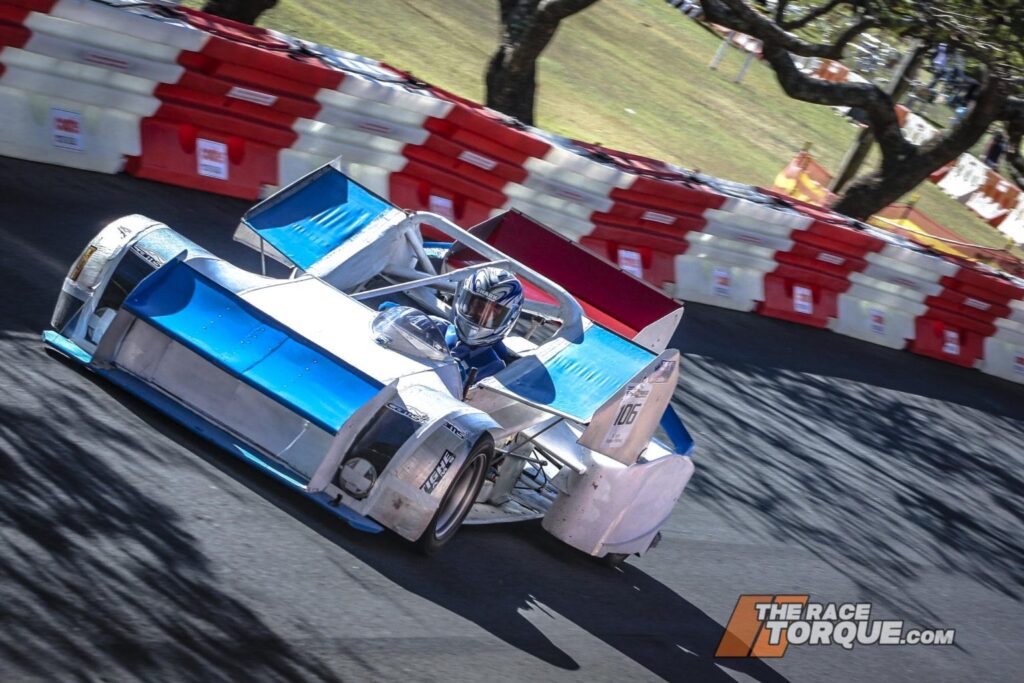
The Recreation
Darren Visser is the ultimate Mr Fixit, and the man behind the recreation, having fallen in love with the concept after being given a photo of the Double Eight in 2012.
Importantly, the tribute is packed with the innovative flair that made the original article so special.
The workmanship on the car is exquisite, with Visser bringing to the fore the skills he developed over many previous projects, including the ridiculous Chamberlain Tractor (a world speed record holder) and equally remarkable Chamberlain Special.
Visser’s inventive streak includes constructing a patented ‘Snow Tunnel’, which was made from scrap collected over five years, with the system allowing snowboarders to practice at any time of year.
He’s a handy motorsport competitor, too, having claimed many hillclimb FTDs in his career to date.
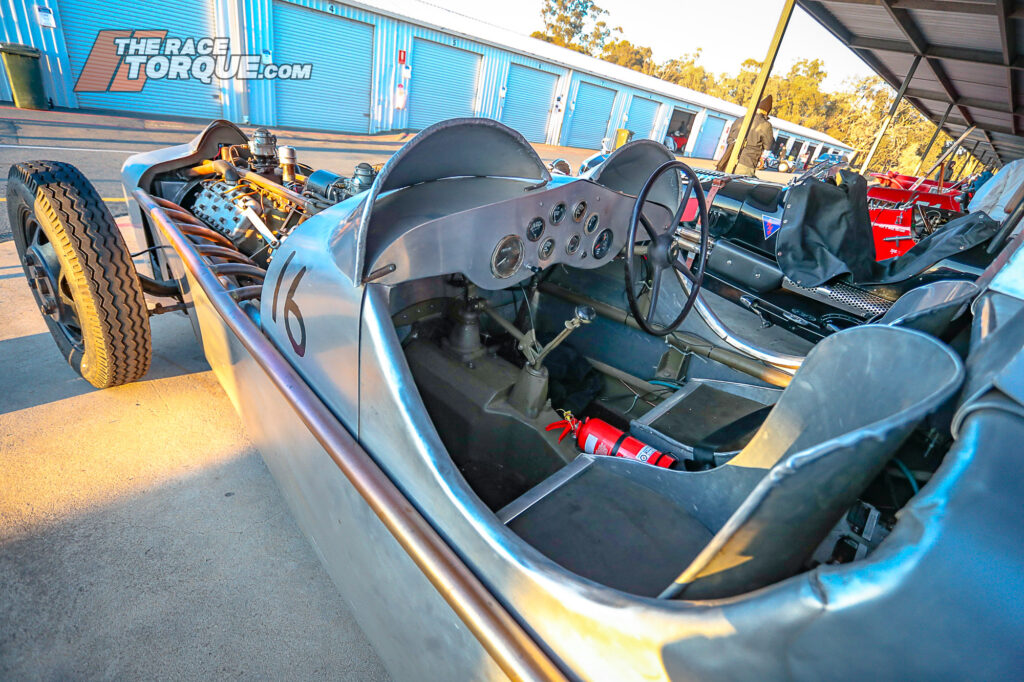
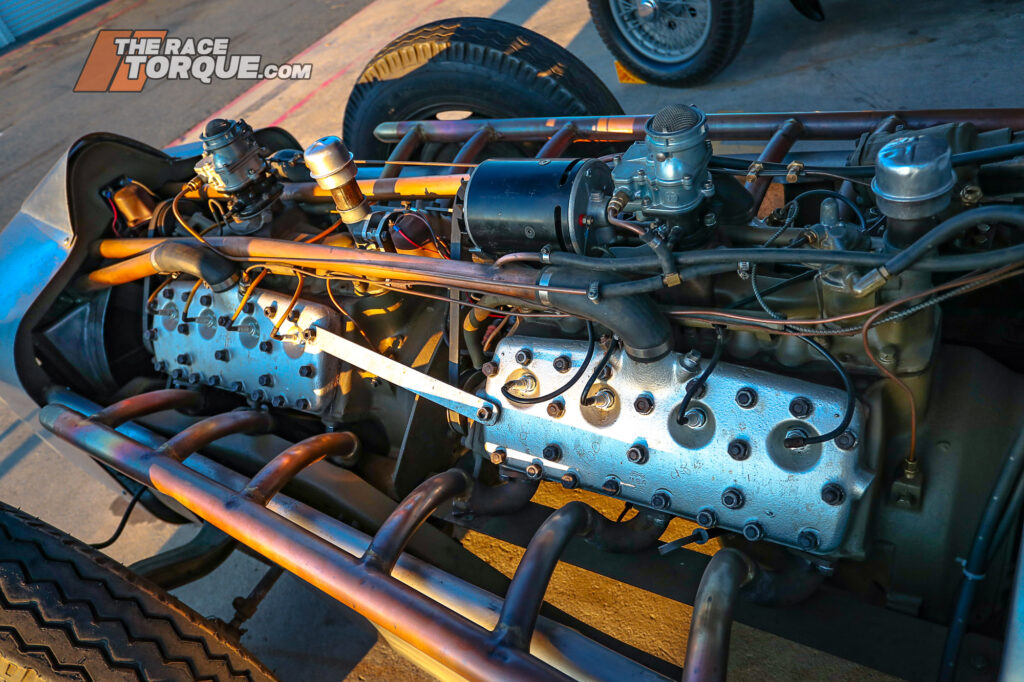
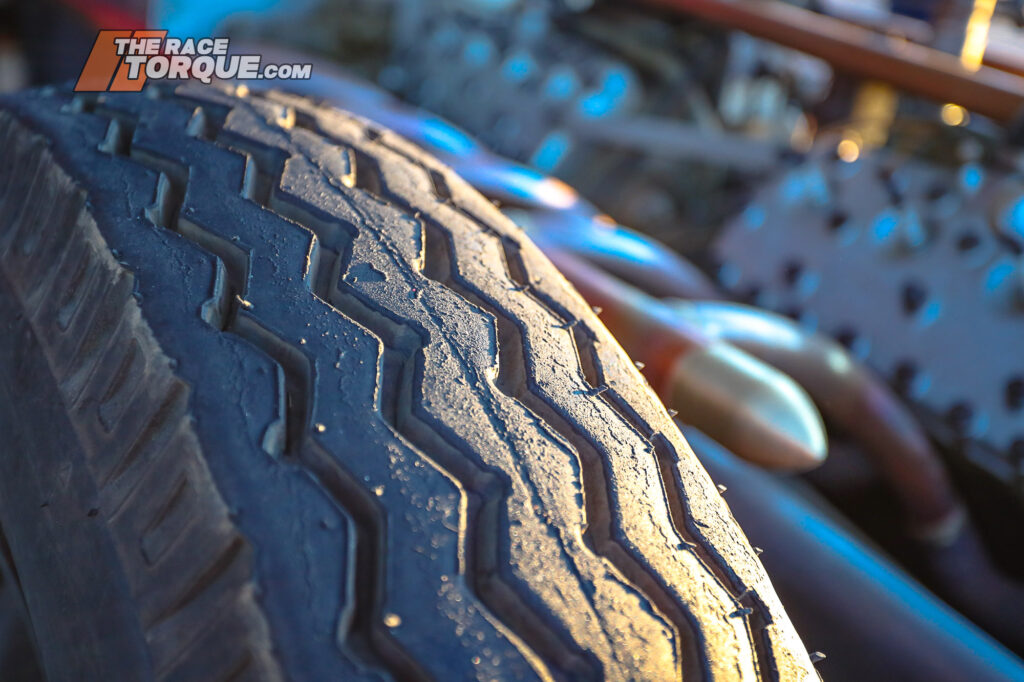
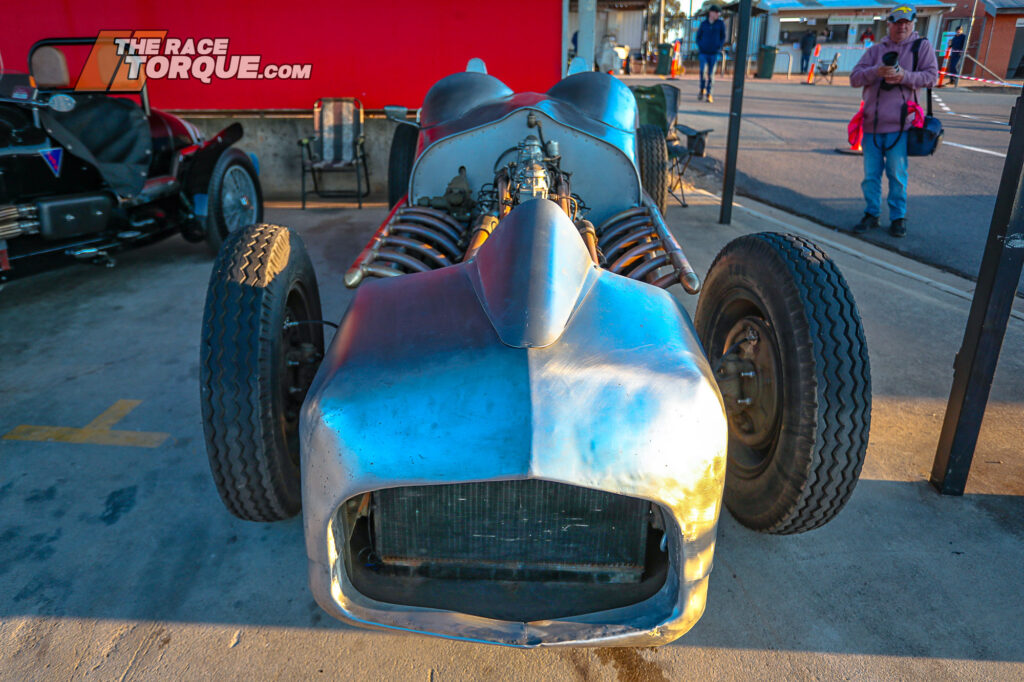
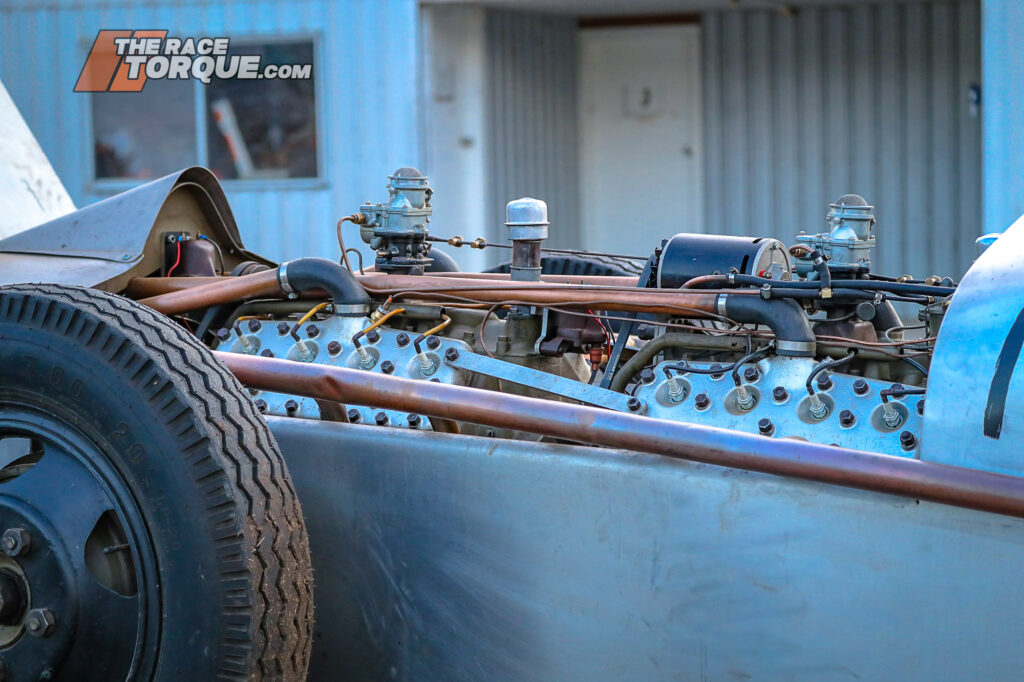
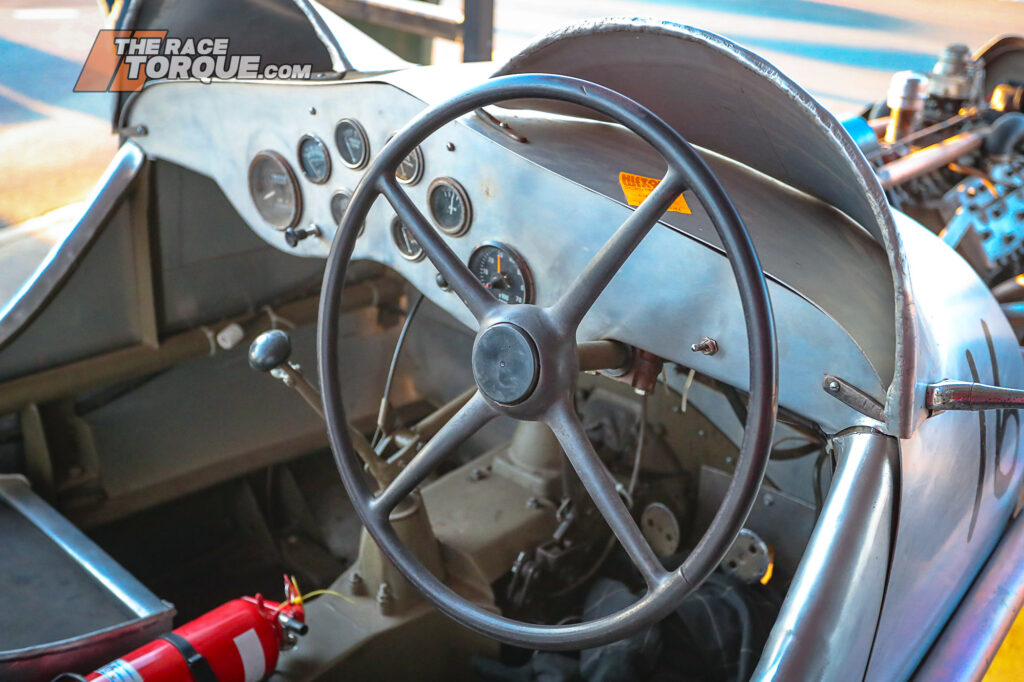
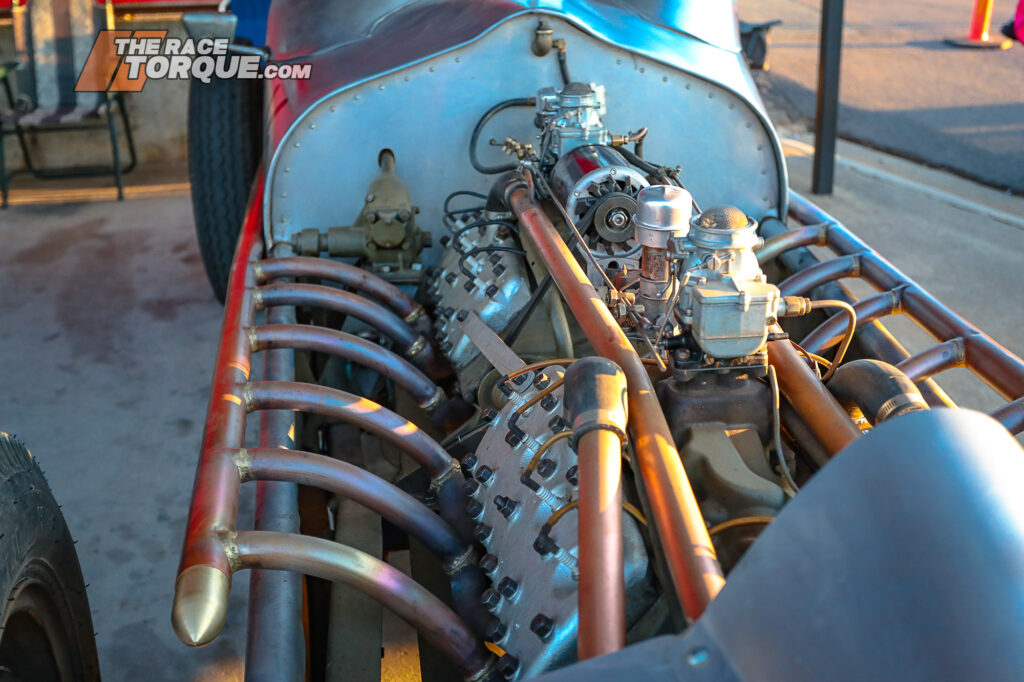
At Historic Winton last weekend, it was impossible not to be drawn to this incredible piece, with its addictive exhaust note and sheer circuit presence the centre of attention every time it passed on track.
For Visser, the project was the perfect challenge to sink his teeth into from an engineering perspective, having pieced together the details of the build from a collection of period photos.
“I started in 2020 in COVID; it was the therapy, you know, when we go in the shed and kill some time, and I needed something beautiful to come out of it… it’s been a worthy process,” he said.
“It is really one of the last giant cars from the late ‘40s when everyone was going smaller, and this is what (Norman) came up with.
“It was the biggest horsepower car of the time, for sure.”
With the side-valve Mercury V8s coming from the Ford Blitz Trucks and the Jailbar family, Visser has kept true to the vehicle’s military origins, applying Army green to the driveline components to give it an authentic feel.
Contrasting those colours, the copper used for the exhaust and cooling system changes hues when fully warmed up, with the V16 note thoroughly unique.
One of the many challenges Visser encountered was keeping the driveline’s temperature in check, which was forever the vehicle’s Achilles heel. The modern version is fitted with a cooling fan up front.
Beyond that, there were other constraints, such as “(Norman) used Mustang Aeroplane panels for all of the bodywork, but I obviously didn’t have that available to me!” Laughed Visser.
To keep the Double Eight on the blacktop, retro truck tyres on big 20-inch wheels complete the look of the modern article.
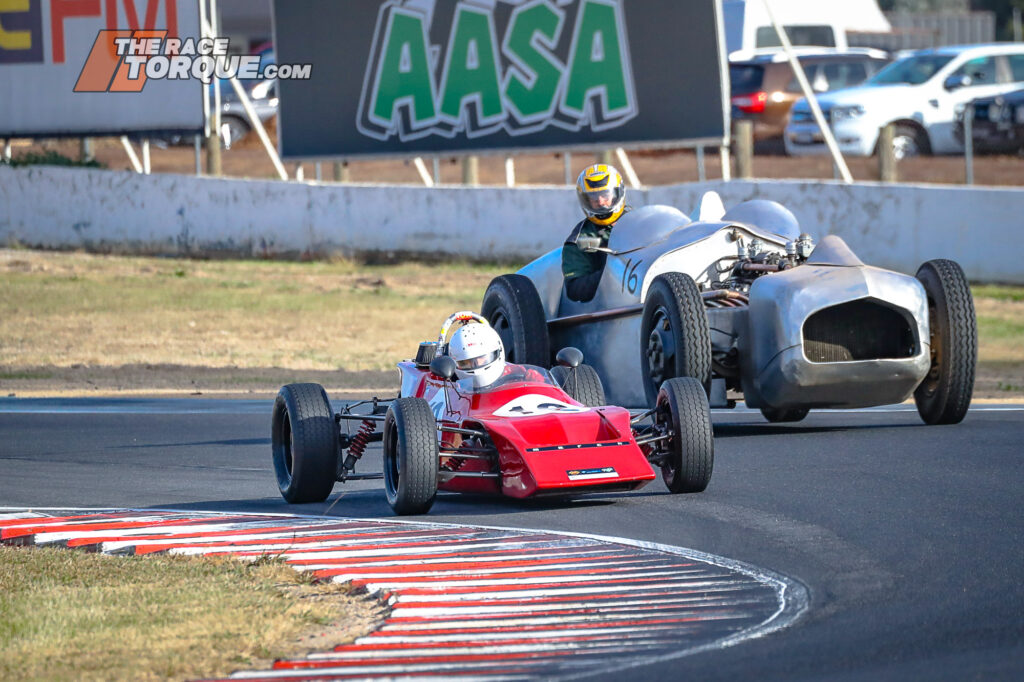
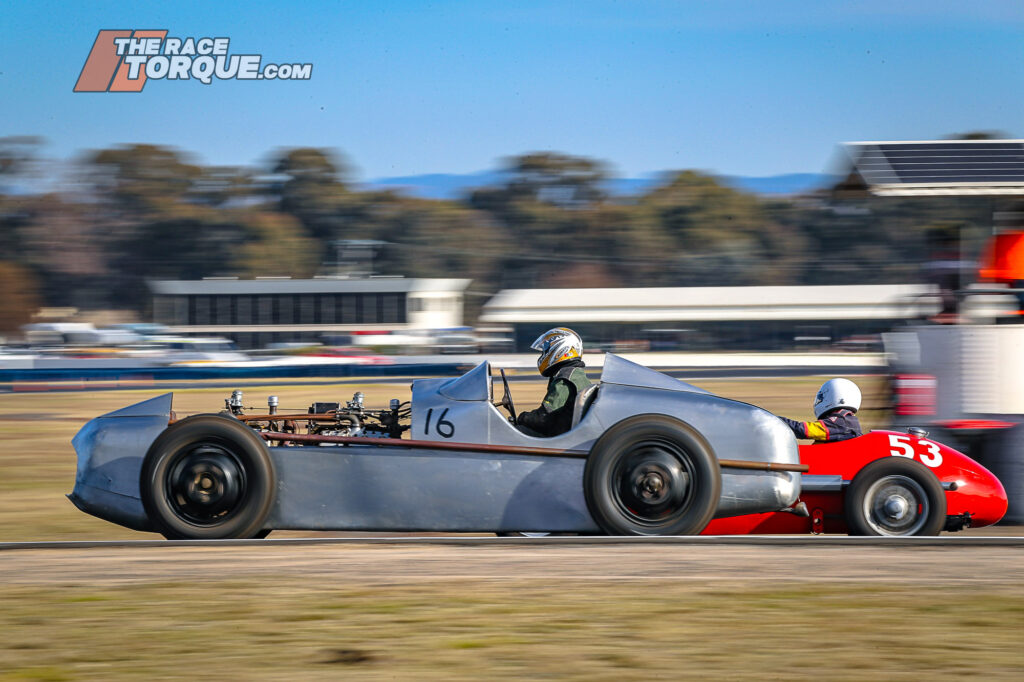
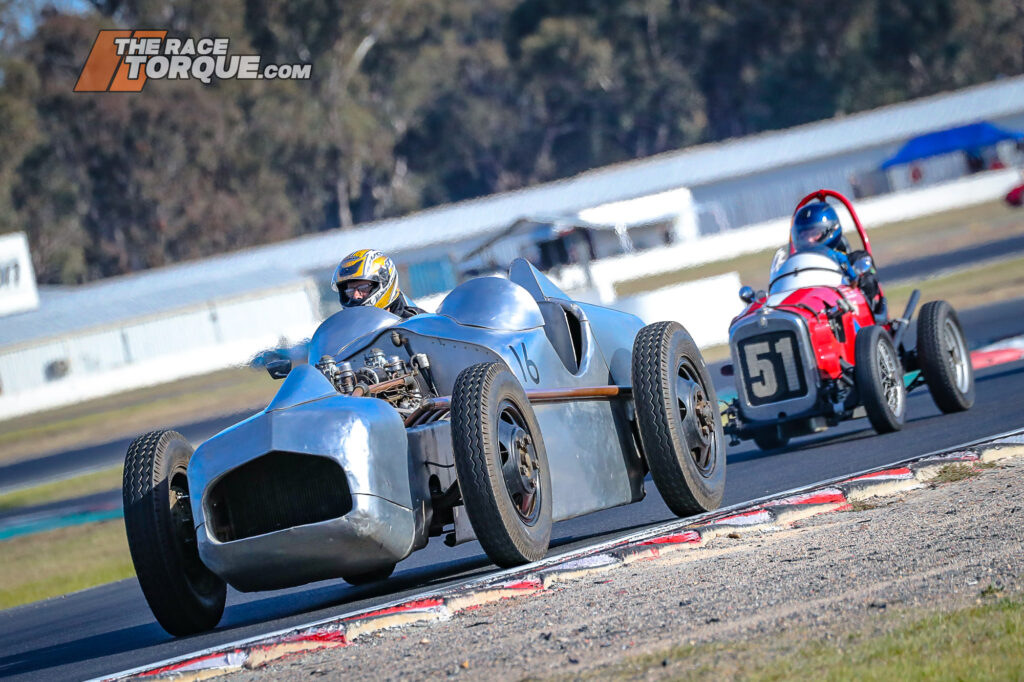
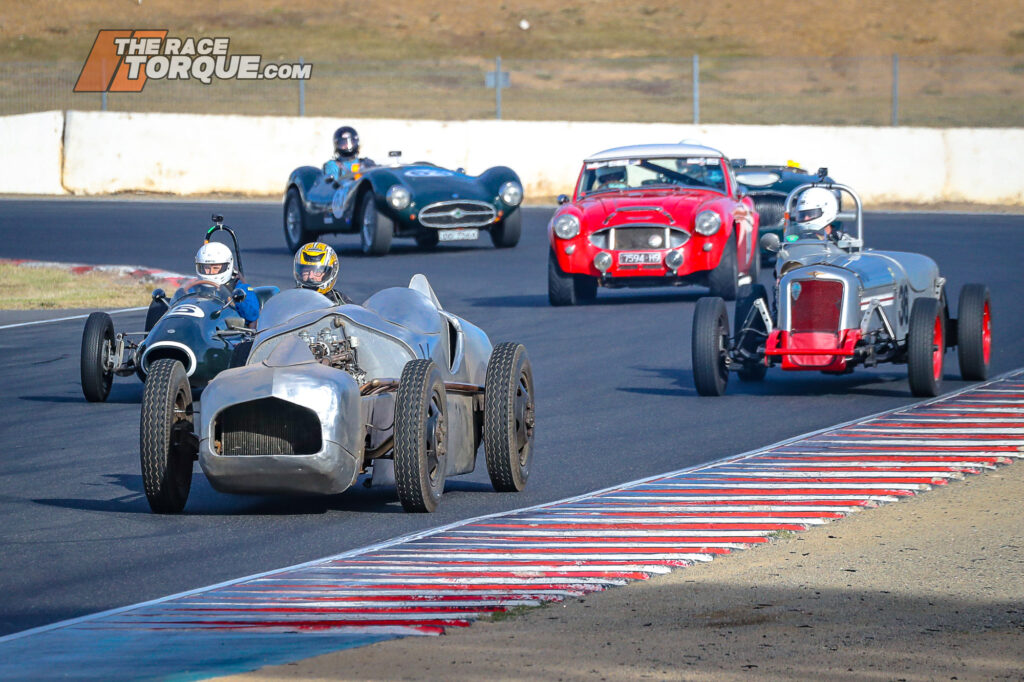
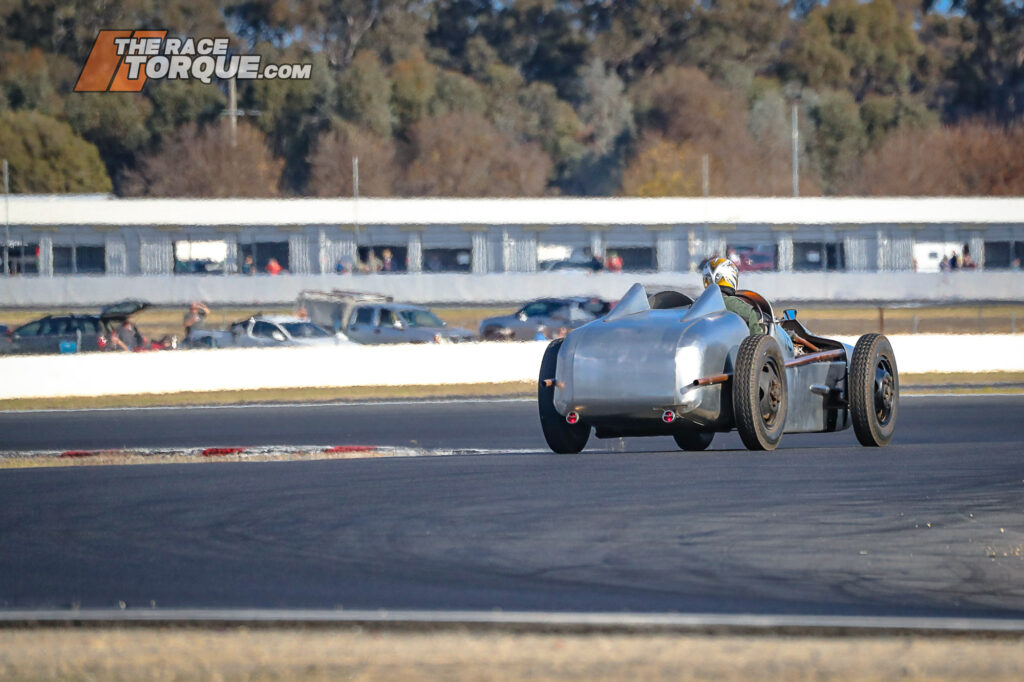
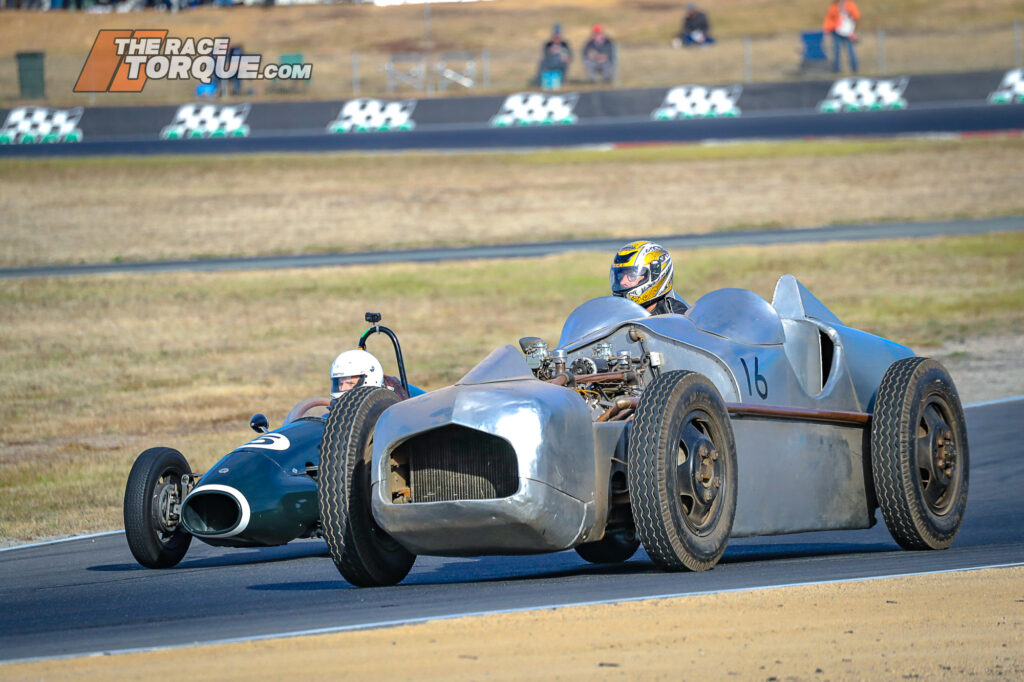
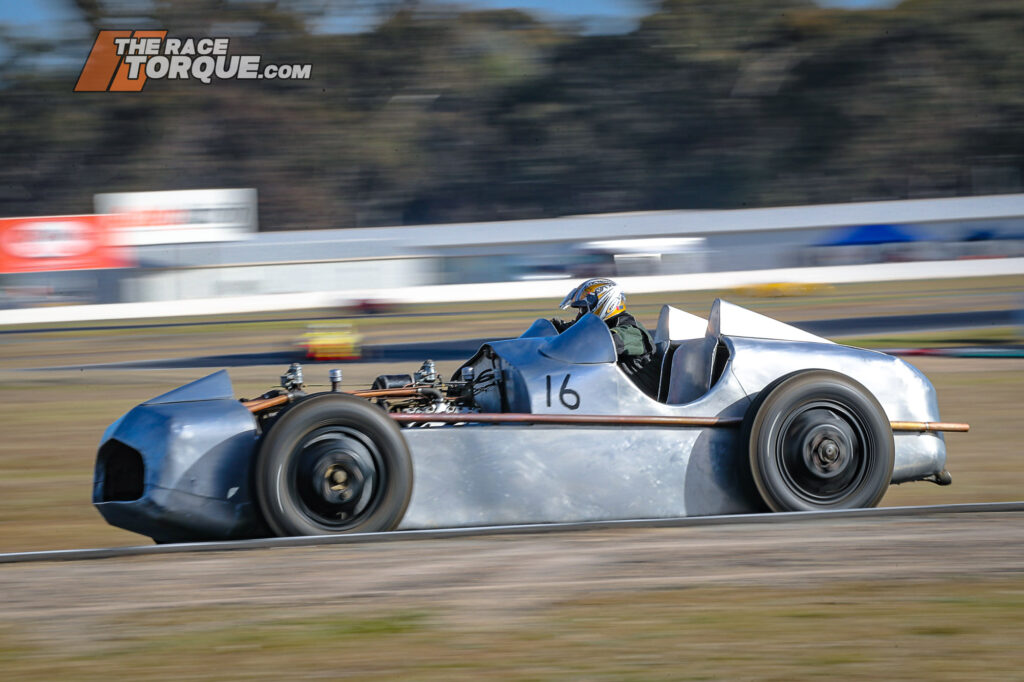
So how does it drive?
“Like a truck! This is the first time out, and it’s surprising, I’m pushing the tyres around and losing a bit of rubber.
“It’s all standard truck stuff, so essentially, it’s just a light truck.
“It’s working well, it’s not as fast as the rest of them, but it’s just a totally different configuration.
“It is probably double in weight (compared to the competition), I’m about 20sec off the pace against the others, but it’s working well, which is pretty impressive.
“I’ve already had offers from around the world, ‘I want to buy it’… but I don’t think it’s quite time yet!”
